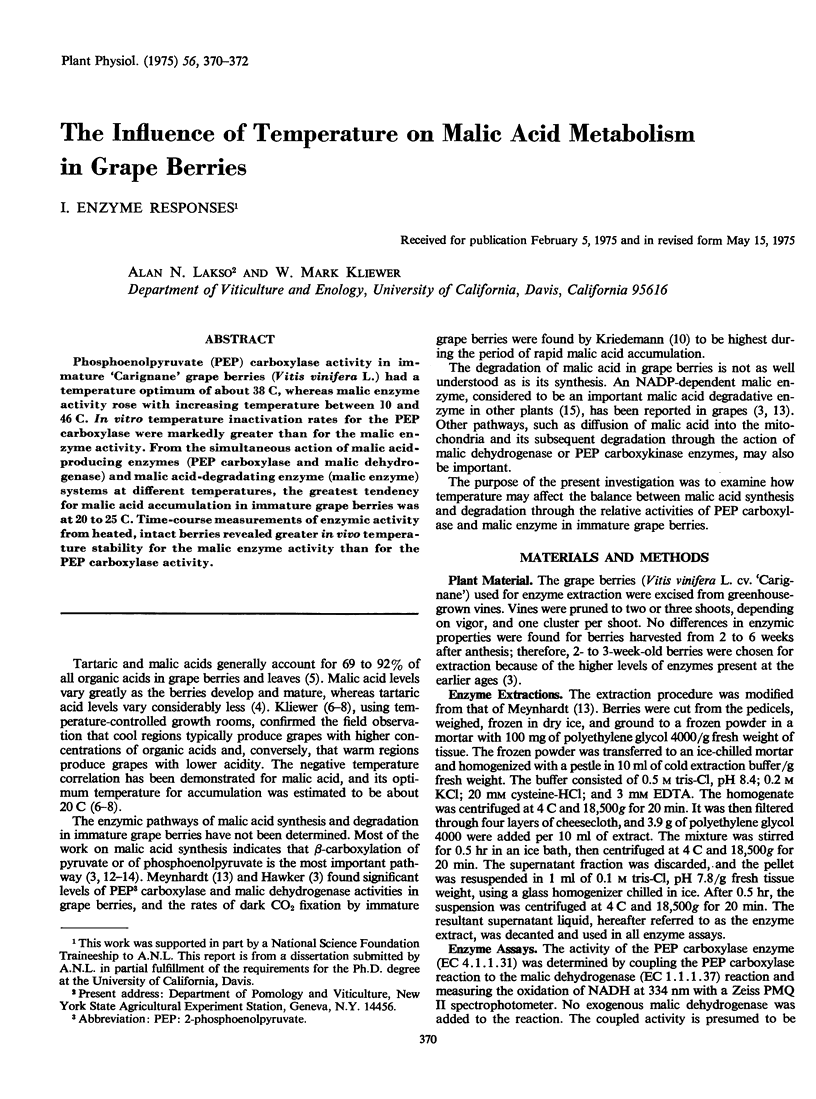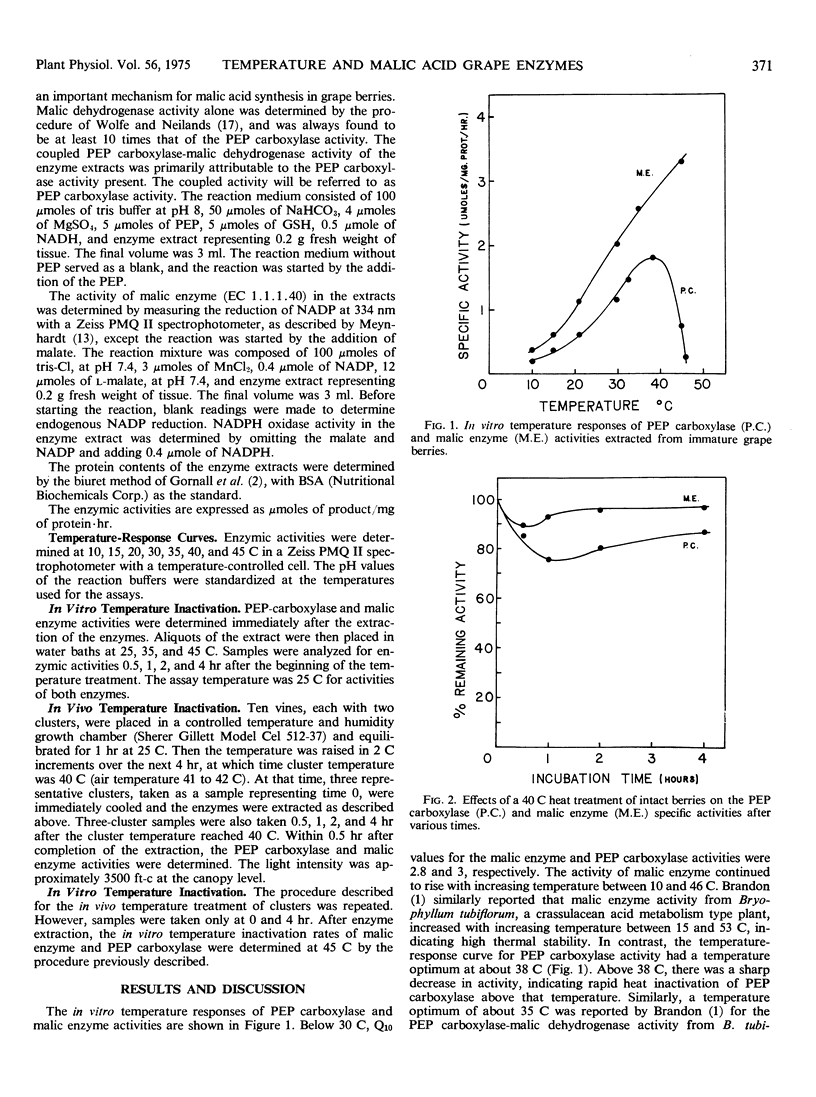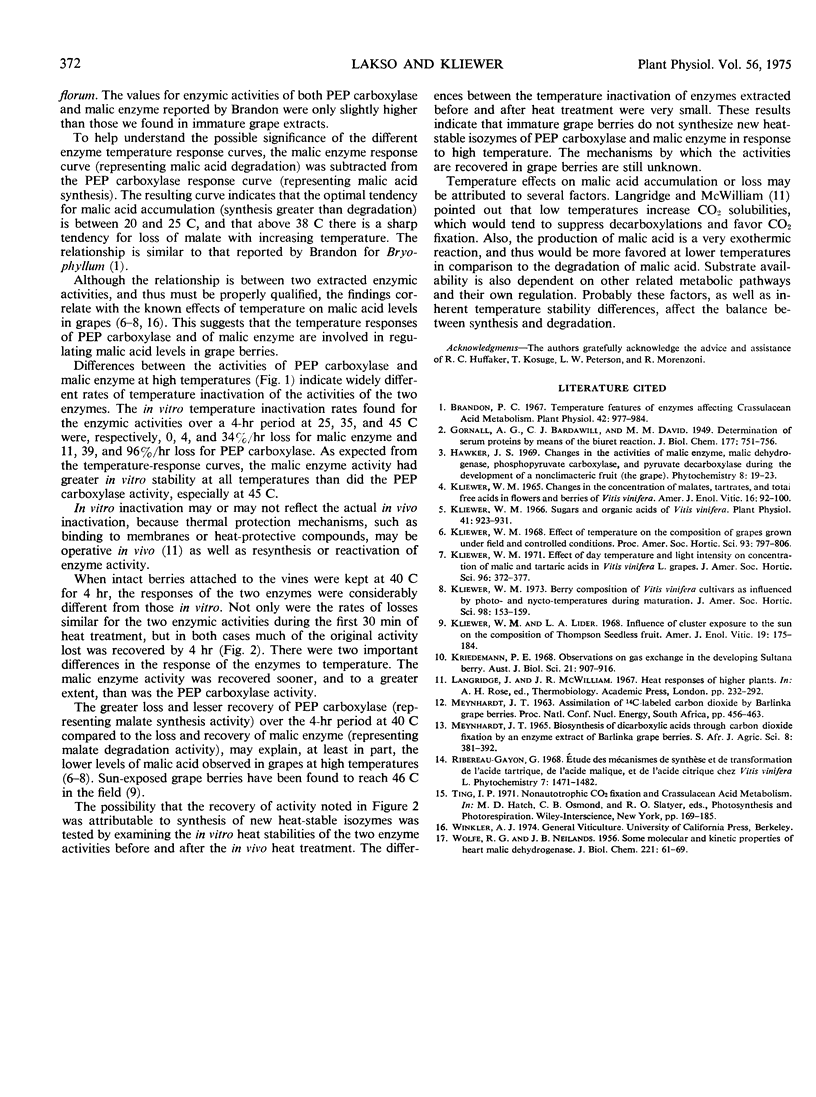Abstract
Phosphoenolpyruvate (PEP) carboxylase activity in immature `Carignane' grape berries (Vitis vinifera L.) had a temperature optimum of about 38 C, whereas malic enzyme activity rose with increasing temperature between 10 and 46 C. In vitro temperature inactivation rates for the PEP carboxylase were markedly greater than for the malic enzyme activity. From the simultaneous action of malic acid-producing enzymes (PEP carboxylase and malic dehydrogenase) and malic acid-degradating enzyme (malic enzyme) systems at different temperatures, the greatest tendency for malic acid accumulation in immature grape berries was at 20 to 25 C. Time-course measurements of enzymic activity from heated, intact berries revealed greater in vivo temperature stability for the malic enzyme activity than for the PEP carboxylase activity.
Full text
PDF


Selected References
These references are in PubMed. This may not be the complete list of references from this article.
- Brandon P. C. Temperature features of enzymes affecting crassulacean Acid metabolism. Plant Physiol. 1967 Jul;42(7):977–984. doi: 10.1104/pp.42.7.977. [DOI] [PMC free article] [PubMed] [Google Scholar]
- Kliewer W. M. Sugars and Organic Acids of Vitis vinifera. Plant Physiol. 1966 Jun;41(6):923–931. doi: 10.1104/pp.41.6.923. [DOI] [PMC free article] [PubMed] [Google Scholar]
- WOLFE R. G., NEILANDS J. B. Some molecular and kinetic properties of heart malic dehydrogenase. J Biol Chem. 1956 Jul;221(1):61–69. [PubMed] [Google Scholar]


